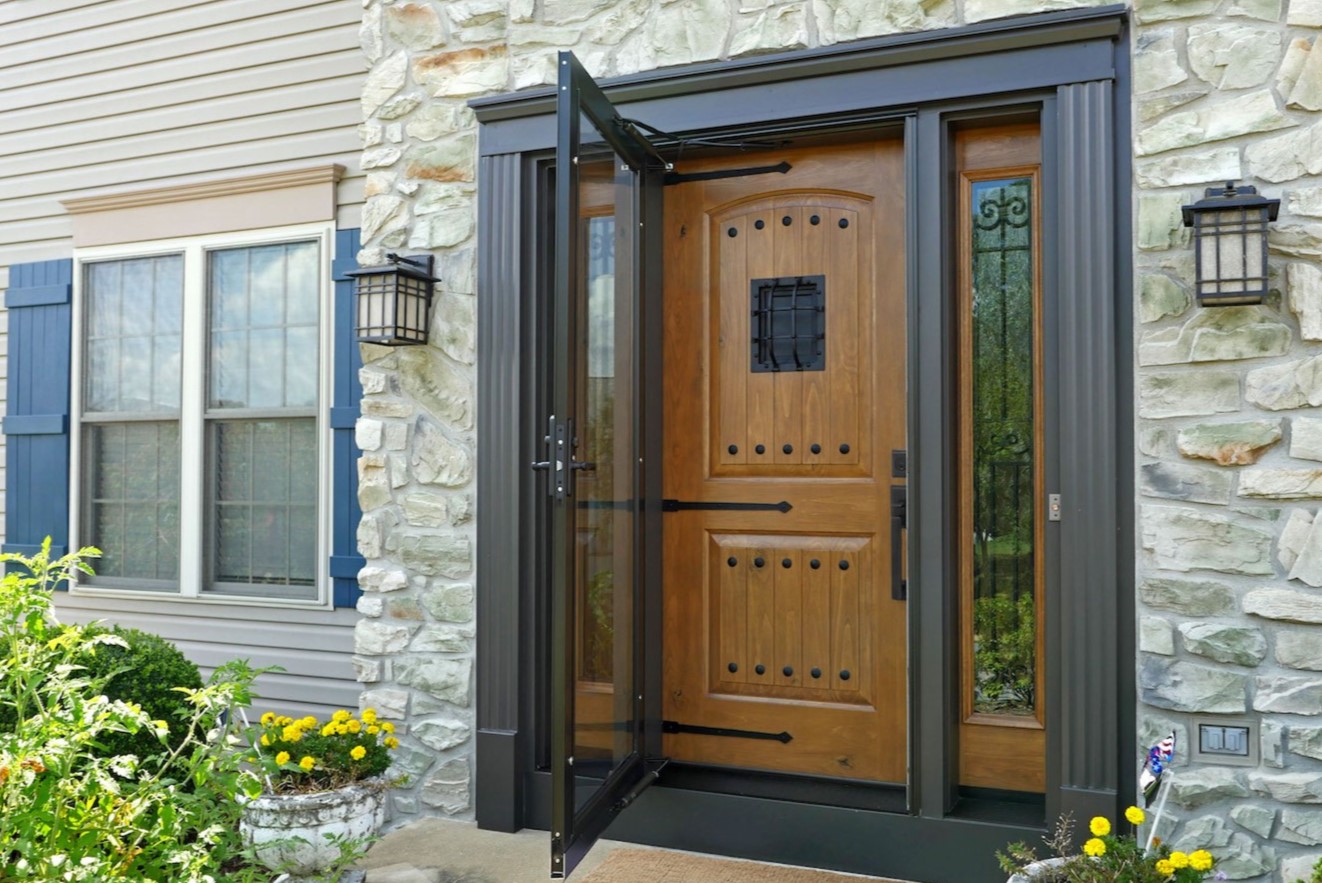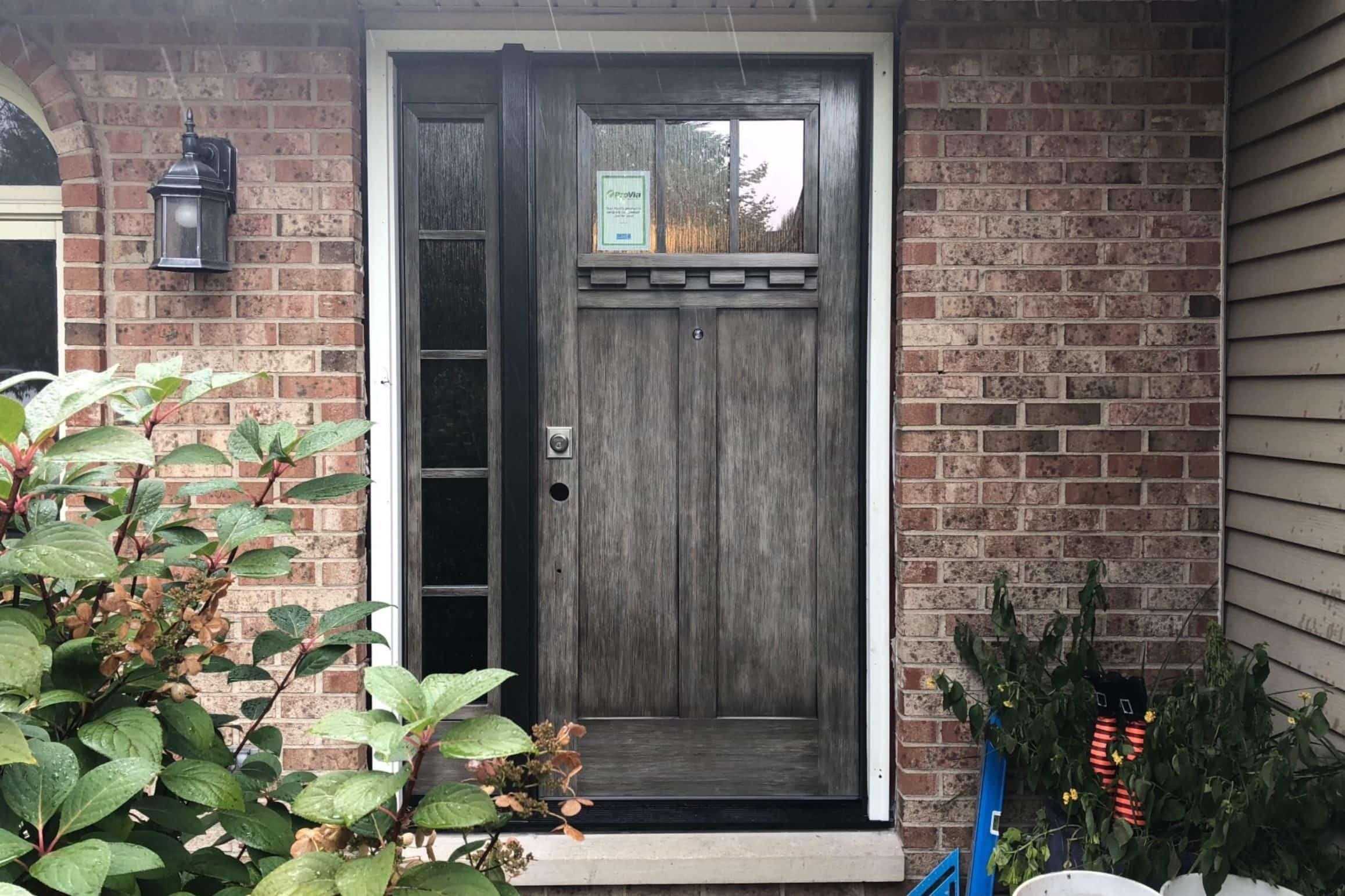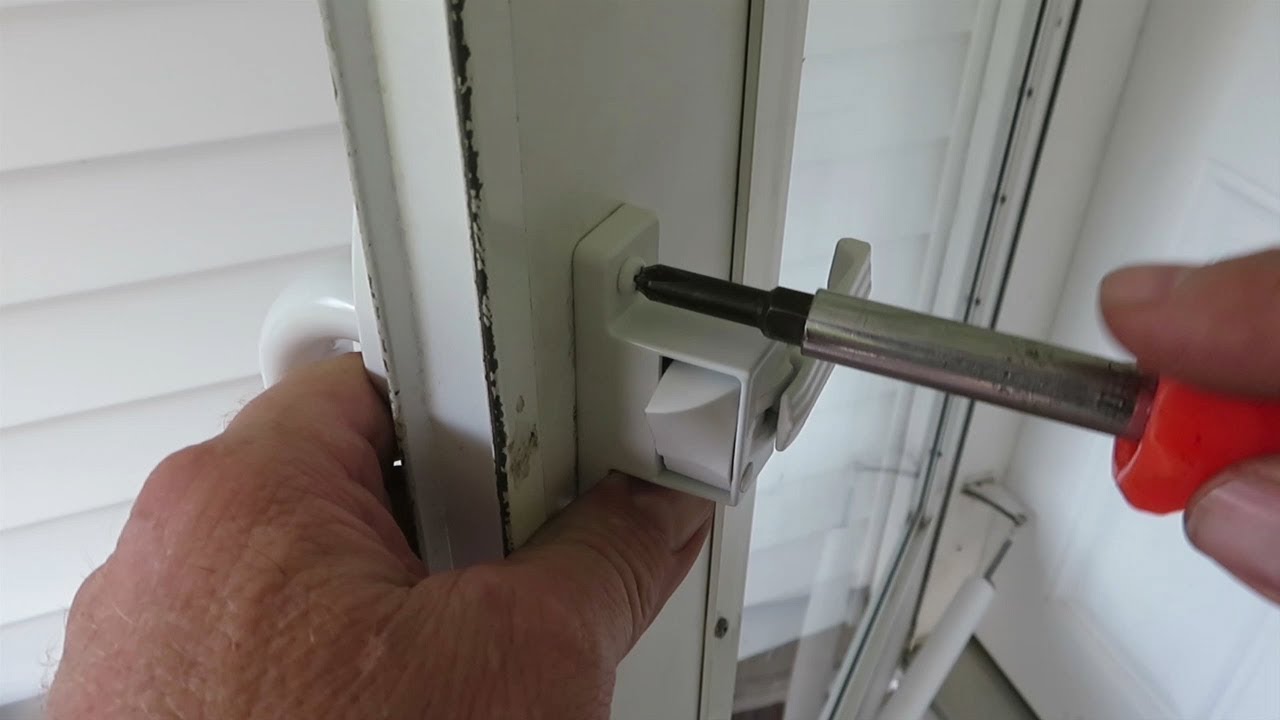Home>Renovation & DIY>Home Renovation Guides>How To Shim A Storm Door


Home Renovation Guides
How To Shim A Storm Door
Modified: February 18, 2024
Learn how to shim a storm door with our comprehensive home renovation guide. Follow our step-by-step instructions for a seamless installation.
(Many of the links in this article redirect to a specific reviewed product. Your purchase of these products through affiliate links helps to generate commission for Storables.com, at no extra cost. Learn more)
Introduction
Welcome to the world of home renovation! Storm doors are a wonderful addition to any home, providing extra protection from the elements and improving energy efficiency. However, it’s not uncommon to encounter a situation where the storm door doesn’t fit perfectly, leaving a noticeable gap that compromises its functionality. Fortunately, with the right tools and a little know-how, you can easily remedy this issue by shimming the storm door.
In this guide, we’ll walk you through the step-by-step process of shimming a storm door to ensure a snug and secure fit. Whether you’re a seasoned DIY enthusiast or a novice looking to tackle your first home improvement project, we’ve got you covered with clear and concise instructions. So, grab your tools and let’s get started on transforming your ill-fitting storm door into a seamless and polished addition to your home!
Key Takeaways:
- Transform an ill-fitting storm door into a snug and secure entryway by measuring, cutting, and strategically inserting shims to fill the gap, ensuring smooth operation and enhanced energy efficiency.
- Shimming a storm door is a rewarding DIY project that enhances home comfort and aesthetics, empowering you to tackle future home improvement challenges with confidence and expertise.
Read more: Installing A Storm Door
Materials Needed
Before diving into the process of shimming your storm door, it’s essential to gather the necessary materials. Here’s what you’ll need:
- Tape measure
- Pencil or marker
- Utility knife or saw
- Wood shims or composite shims
- Hammer
- Screwdriver
- Level
These basic tools and materials will equip you to effectively address the gap in your storm door and ensure a professional-looking result. Once you have everything on the list, you’re ready to move on to the next step of measuring the gap and determining the required shims.
Step 1: Measure the Gap
Before you can begin shimming your storm door, it’s crucial to accurately measure the gap between the door and the frame. This will guide you in determining the precise amount of shimming required to achieve a proper fit. Here’s how to do it:
- Close the Door: Start by closing the storm door securely. This will allow you to assess the gap in its entirety and ensure that the measurements are taken with the door in its intended position.
- Measure the Gap: Using a tape measure, carefully determine the width of the gap between the door and the frame. Take measurements at multiple points along the height of the door to account for any variations in the gap size.
- Record the Measurements: Once you have the measurements, jot them down on a piece of paper or directly onto the door frame with a pencil or marker. This will serve as a reference point when cutting the shims to the required size.
By accurately measuring the gap, you’ll be able to proceed with confidence, knowing that the shims will effectively address the specific dimensions of the space. With this crucial step completed, you’re ready to move on to the next stage of the shimming process: cutting the shims to fit.
Step 2: Cut the Shims
Now that you have precise measurements of the gap, it’s time to cut the shims to the appropriate size. Shims are thin wedges typically made of wood or composite materials, and they are used to fill the space between the door and the frame, ensuring a snug and secure fit. Here’s how to cut the shims:
- Select the Shims: Choose shims that are compatible with the material of your door frame and the width of the gap. Wood shims are a traditional option, while composite shims offer durability and moisture resistance.
- Mark the Shims: Using the measurements you recorded earlier, mark the shims with a pencil or marker to indicate the precise length required. Be sure to double-check the measurements to avoid errors in cutting.
- Cut the Shims: With a utility knife or saw, carefully cut the shims along the marked lines. Exercise caution to achieve clean and straight cuts, as accurately sized shims are essential for achieving a seamless fit.
By cutting the shims to fit the measured gap, you’re taking a significant step toward addressing the door’s misalignment and ensuring a professional-looking result. With the shims prepared, you’re ready to proceed to the next stage of the process: inserting the shims to fill the gap.
When shimming a storm door, make sure to use weather-resistant shims to prevent rot. Place shims at the top, middle, and bottom of the hinge side to ensure proper alignment.
Step 3: Insert the Shims
With the shims cut to the precise measurements of the gap, it’s time to insert them strategically to fill the space between the storm door and the frame. Proper insertion of the shims is crucial for achieving a secure and stable fit. Here’s how to proceed:
- Position the Shims: Carefully place the cut shims into the gap between the door and the frame, ensuring that they are positioned evenly and snugly. The shims should be inserted at multiple points along the height of the door to provide consistent support.
- Use a Level: To verify the alignment and stability of the shims, use a level to ensure that the door is sitting evenly on the shims. Adjust the positioning of the shims as needed to achieve a level and balanced fit.
- Secure the Shims: Once the shims are positioned correctly and the door is level, gently tap them into place using a hammer to ensure a secure fit. Take care not to apply excessive force, as this could cause damage to the door or frame.
By methodically inserting the shims and verifying their alignment, you’re taking the necessary steps to address the gap and ensure that the storm door is properly supported. With the shims securely in place, you’re ready to move on to the next stage of the process: securing the shims to provide lasting stability.
Read more: How To Choose A Storm Door
Step 4: Secure the Shims
After inserting the shims to fill the gap and ensuring their proper alignment, the next crucial step is to secure the shims in place to provide lasting stability and support for the storm door. Properly securing the shims will contribute to the overall integrity of the installation. Here’s how to proceed:
- Pre-Drill Screw Holes: Using a screwdriver, carefully pre-drill pilot holes through the shims and into the door frame. This will facilitate the insertion of screws and prevent the shims from splitting when the screws are driven in.
- Insert Screws: With the pilot holes in place, insert screws through the shims and into the door frame. Ensure that the screws are driven in securely but not excessively tightened, as this could cause the shims to shift or the frame to become misaligned.
- Verify Stability: Once the shims are secured with screws, verify the stability of the door by gently testing its movement. The door should open and close smoothly without any noticeable shifting or instability.
By securely fastening the shims in place, you’re reinforcing the structural integrity of the storm door installation and ensuring that it remains secure and aligned over time. With the shims effectively secured, you’re ready to proceed to the final stage of the process: testing the door to confirm its proper function.
Step 5: Test the Door
With the shims securely in place and the storm door installation nearing completion, it’s time to put the finishing touches on the project by testing the door to confirm its proper function. This step is crucial for ensuring that the door operates smoothly and that the shimming has effectively addressed any gaps or misalignments. Here’s how to proceed:
- Open and Close the Door: Carefully open and close the storm door multiple times to assess its movement and functionality. Pay attention to any signs of sticking, rubbing, or misalignment, as these could indicate that further adjustments are needed.
- Check for Gaps: Inspect the perimeter of the door to ensure that the shims have effectively closed any gaps between the door and the frame. The door should fit snugly and securely without any noticeable spaces or misalignments.
- Verify Smooth Operation: Confirm that the door opens and closes smoothly, latches securely, and maintains a consistent alignment with the frame. Any issues with the door’s operation should be addressed promptly to ensure optimal functionality.
By thoroughly testing the door, you can ensure that the shimming process has effectively resolved any fitment issues and that the storm door is now functioning as intended. With the door passing the test for smooth operation and proper alignment, you can take pride in a successful shimming project and enjoy the enhanced functionality of your storm door.
Conclusion
Congratulations on successfully shimming your storm door! By following the step-by-step process outlined in this guide, you’ve transformed a misaligned and ill-fitting door into a secure and functional entryway that enhances the comfort and energy efficiency of your home. The careful measurements, precise cutting, strategic insertion, secure fastening, and thorough testing have all contributed to a professional and polished result.
Shimming a storm door is a rewarding home improvement project that not only addresses practical concerns such as drafts and energy loss but also elevates the overall aesthetic and functionality of your home’s entryway. With the right tools, materials, and know-how, you’ve tackled this project with confidence and skill, achieving a seamless fit for your storm door.
As you enjoy the benefits of your newly shimmed storm door, take pride in the craftsmanship and attention to detail that have gone into this project. Your home now boasts an enhanced level of comfort, protection, and visual appeal, thanks to your dedication to quality home renovation.
Remember, the skills and techniques you’ve acquired in shimming your storm door can be applied to other home improvement projects, empowering you to take on new challenges with confidence and expertise. Whether it’s addressing gaps in windows, aligning cabinets, or leveling flooring, the principles of shimming will serve you well in various aspects of home renovation.
Thank you for joining us on this shimming journey, and we hope this guide has equipped you with the knowledge and inspiration to continue enhancing your living space with skillful and rewarding home improvement projects. Here’s to the comfort, beauty, and functionality of your home!
Frequently Asked Questions about How To Shim A Storm Door
Was this page helpful?
At Storables.com, we guarantee accurate and reliable information. Our content, validated by Expert Board Contributors, is crafted following stringent Editorial Policies. We're committed to providing you with well-researched, expert-backed insights for all your informational needs.















0 thoughts on “How To Shim A Storm Door”